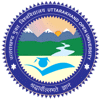|
Ch 1: Technology Framework in e-Learning
- 1.1: Introduction
- 1.2: Technology Analysis
- 1.3: Appropriate Technology
|
|
Ch 2: Learners Profile Analyze
- 2.1: Resources Availability At Learner's End
- 2.2: Selection of Technology To Match Resources
- 2.3: Meeting Objectives
|
|
Ch 3: Available Tools & Technologies for Delivering e-Content
- 3.1: Approaches for delivering e-Content.
- 3.2: Multimedia Learning Resources.
- 3.3: Technologies in Textual Deliveries.
- 3.4: Audio Technologies & Tools
- A) Audio File Formats
- B) Compression Techniques
- C) Audacity Audio Tool
- 3.5: Video Technologies & Tools
- A) File Formats
- B) Compression techniques
- C) Techniques by Easynow
|
|
Ch 4: Structuring & Presenting e-Content
- 4.1: Structuring content based on pedagogical concepts
- 4.2: Presenting content in different output formats
- 4.3: Authoring tools to create and manage content
- 4.4: Comparing eLML to other markup languages
- 4.5: Usability and marketing studies
|
|
Back To Course 5
|
|
Chapter 3.3 - Technologies in Textual Deliveries
1. Joomla
Joomla is a solid utility player, good for a variety of different situations, and it’s relatively straightforward to install and set up. There’s a bit of a learning curve to understand how the menus, site structure and content work and interrelate, but once you’ve got it the system provides a strong infrastructure for straightforwardly creating useful site structures to support even very large sites. Add-on modules support a wide variety of functionalities, from directories to shopping carts to community features, providing a solid base for many different kinds of sites.
While Joomla supports more complex site structures than WordPress, it is not as flexible as Drupal or Plone. Each piece of content is typically associated with a single page. This makes the system more straightforward to understand, but can be cumbersome to update and limits very advanced structures (like structuring a site around a multifaceted taxonomy). It’s not easy, for instance, to create your own types of content (for example, a directory of state schools that includes key information about those schools), and then show it in different views on different pages of your site. If you’re not sure what any of this means, you probably don’t need to worry about it—these are advanced considerations that won’t apply to the vast majority of sites.
Joomla’s adds robust permission features to allow people to add, edit or publish information based on site section, content type or more—if you require a complicated workflow, you will want to wait for this version. The new version also somewhat simplifies organization and display of content items. However, you are still limited to one category per article, which may lead to the need for duplication if you want to include it in more than one site section.
For further reading and more information please visit:
www.joomla.org/about-joomla.html
http://en.wikipedia.org/wiki/Joomla
http://www.joomlatutorials.com/
Next
|
|
